Can Drones Fly In Cold Weather? 10 Tips For Flying

Despite the fact that manufacturers of drones (UAVs) establish a certain temperature regime for the use of their devices, pilots periodically need to use their drones at negative air temperatures. If necessary, you can use drones at low temperatures, but for this you need to follow some additional rules for the operation of drones.
The main reason it is not recommended to launch drones in cold weather is the rapid discharge of batteries. Due to the low temperature, LiPo batteries used in drone discharge faster because they produce less electricity due to slower chemical reactions. What to do, if the owners of the drone wants to fly at a temperature below 0°C? Here we will tell you the best tips for flying drones in cold weather (winter).
So Can Drones Fly In Cold Weather? Yes, drones can fly in cold weather, but their flight time is significantly reduced by low temperatures. A fully charged drone flight time is usually between 25 to 30 minutes, while during cold weather that flight time is reduced to just 10 to 15 minutes. This is because batteries are sensitive to cold temperatures.
Summary of 10 things you must know if you’re using a drone in cold weather:
| 10 Tips For Flying a Drone In Cold Weather: |
|---|
| Tip # 1: Pre-flight Preparation |
| Tip # 2: Keep Your Batteries Warm |
| Tip # 3: Plan a Shorter Flight Time |
| Tip # 4: Watch Out For The Wind |
| Tip # 5: Keep an Eye on the Altitude |
| Tip # 6: Beware of The Risk of Freezing of the Propellers and Engines |
| Tip # 7: Avoid Fogging on the Camera At Low Temperatures |
| Tip # 8: Plan for a Sudden Drop in Voltage |
| Tip # 9: Activate Obstacle Detection Before Flight |
| Tip # 10: Monitor the Drone Behavior During the Flight |
How to Properly Fly a Drone In Cold Weather?
In order for the batteries to last longer during the flight, they must be warmed up. Their optimum temperature before starting should be + 25 °C. When flying, it is better to keep a low altitude, reducing the load on the engines, as when lifting, moving and hovering the drone at a sufficiently high altitude, the engines require more energy.
It is better to abandon flights at negative air temperatures, but in view of professional necessity, the use of UAVs is mandatory. If it is not possible to warm up the batteries initially before the flight, then when the drone starts up, it is worth hanging it at a low altitude for about a minute, so that the batteries can warm up during use, and only then proceed to flight.
There is another trick to be aware of. DJI has special heating stickers that stick to the battery case. These stickers are designed to maintain the battery’s operating temperature during use in cold weather. They should be used in cases where the air does not warm up above +15 °C.
If there is no urgent need for flying in cold weather, it is better to refuse to launch the drone. This will allow not to use rechargeable batteries in extreme conditions and extend their service life.
10 Tips For Flying a Drone In Cold Weather
Tip #1: Pre-flight Preparation
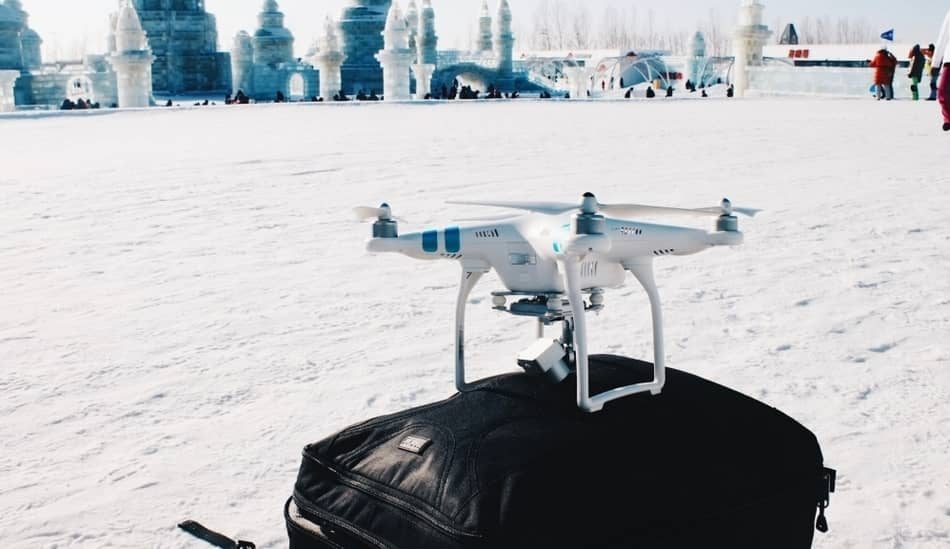
Now, before taking off, it is recommended to rotate your drone for about a minute to make sure everything is working well and that it is not too cold to fly. You will still have to make your usual adjustments! It can also be a useful way to heat the battery.
If possible, try to make your drone settings in a warm place if you can. For example, if you are near your vehicle, place your drone inside or in the trunk to make your adjustments instead of placing it on cold or even frozen ground.
Obviously, perform your calibrations outside the vehicle and away from any metal source as quickly as possible. This is how you will safely prepare your drone before flying in cold weather.
Related Article: How Far Can A Drone Fly? Expert Explains
Tip #2: Keep Your Batteries Warm

This is one of the most important tips for flying your drone in cold weather. I already talked about this but let’s reiterate: batteries hate cold! And therefore the flight time will be considerably reduced. When we talk about batteries, we mean both those in the drone and those in the remote control.
To be sure that they are 100% charged when you arrive on the ground, I advise you to recharge them at least 24 hours maximum before going out. Get hand warmers not only to keep your hands warm, but also to keep them close to your batteries. Now be careful not to place the hand warmers directly on a battery, as they emit too much heat.
You can use battery heaters if you have a DJI drone. Some drones of the brand like the Inspire 2 have an automatic preheating function, specially dedicated for this kind of situations. If you do not have smart batteries, we recommend that you run your engines at low speed before taking off for 2/3 minutes.
IF WHEN YOU TAKE OUT THE BATTERIES, THEY ARE COLD TO THE TOUCH THEN THEY ARE NOT READY FOR USE
Tip #3: Plan a Shorter Flight Time
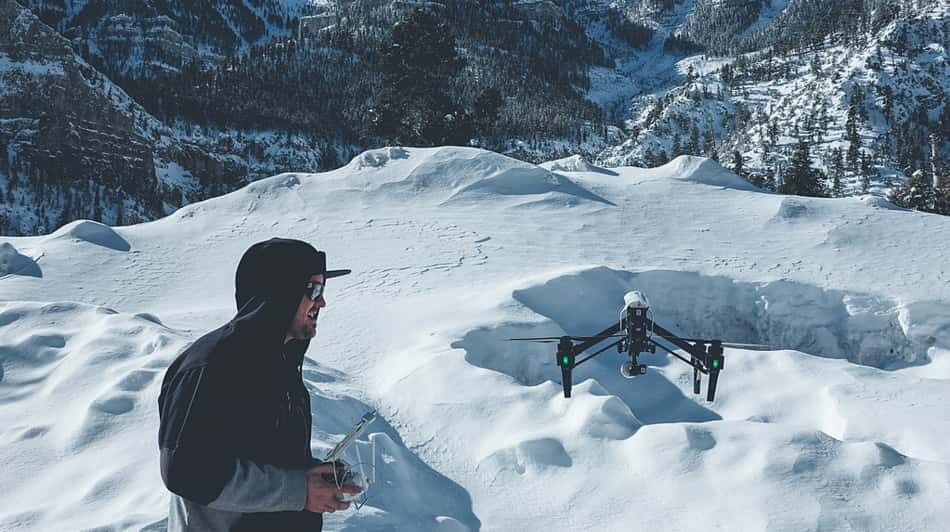
The batteries in drones are called LiPo which means Lithium Polymer. They hate the cold! It slows down their functioning and reduces their flight capacities. This is also why flights are often much shorter when flying a drone in ski and in cold weather (temperatures below 10 °C). A fully charged drone battery that typically provides 20 to 25 minutes of flight time can only provide 10 to 15 minutes in cold weather.
The drone contains lots of electronic components and if you fly it in very difficult climatic conditions like cold or humidity, you risk damaging it considerably. You will find a lot of humidity in the clouds or fog. And you don’t have to have a higher education to understand that water and electricity never went well together.
Tip #4: Watch Out For The Wind
You now know that the cold has a negative impact on the general functioning of the drone and accessories. But if the wind picks up when it is already 0 °C outside, you will have the impression that it is -10 °C. In addition to catching a cold and freezing your fingertips, you really risk losing your drone.
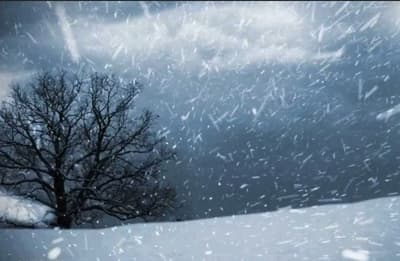
It is also super important to check the operating temperatures of your drone predicted by the manufacturer. Don’t cross those boundaries. Here are a few examples:
- DJI Spark: 32 °F to 104 °F (0 °C to 40 °C)
- DJI Phantom 4: 32 °F to 104 °F (0 °C to 40 °C)
- DJI Inspire 2: 14 °F to 104 °F (-10 °C to 40 °C)
- Yuneec Typhoon H: 14 °F to 104 °F (-10 °C to 40 °C)
Tip #5: Keep an Eye on The Altitude
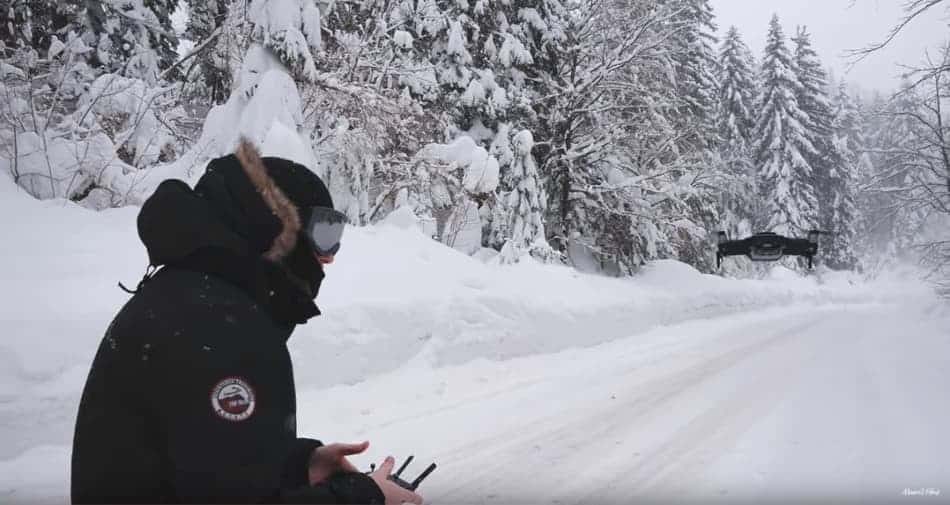
Finally, avoid flying at high altitudes. If it is -10°on the ground, I let you guess the temperatures at 150 meters above sea level and more. It is essential to monitor its flight altitude because the drone may have a different behavior compared to usual. And above all the higher you go, the lower the temperature.
So it affects the capacity of the batteries and your flight time, but strong winds also occur at these altitudes. Naturally the flight time will be reduced, I mentioned it above. But what struck me the most was not so much the batteries of the drone but that remote control. It melted like snow in the sun (this is the case to say). Barely 15 minutes of flight and presto, I was already on low battery.
Tip #6: Beware of The Risk of Freezing of the Propellers and Engines
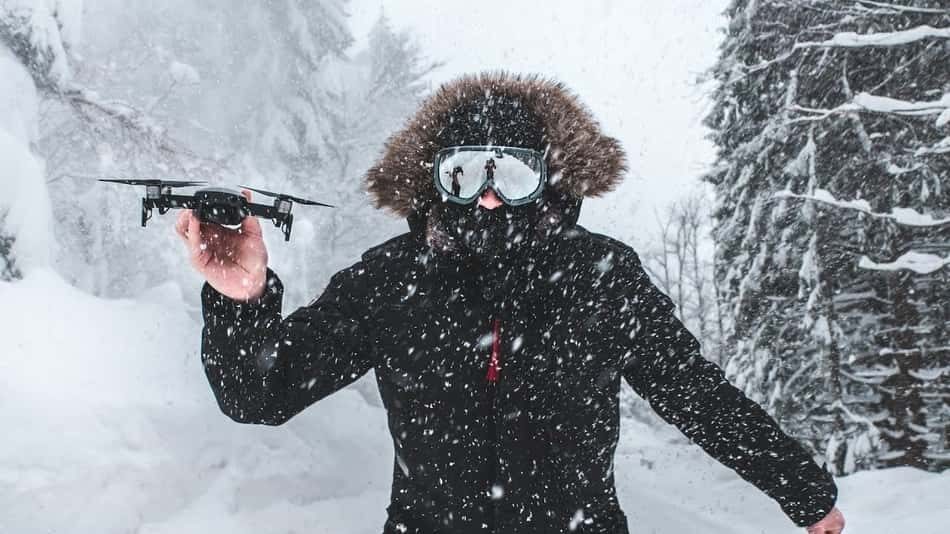
If you decide to brave the climate and fly your drone, the major risk to be exposed is the freezing of the propellers, engines and sensors. Going up in altitude, the humidity present in the air or the clouds will attach to the drone and the temperature will be colder and colder. I let you imagine the rest.
To reduce this risk of freezing and therefore the risk of falling drone in the snow, it is very important to wipe all the drone parts well before takeoff. Keep this in mind as it is a very important point if you do not want your drone to fall from the sky.
Tip #7: Avoid Fogging on the Camera At Low Temperatures
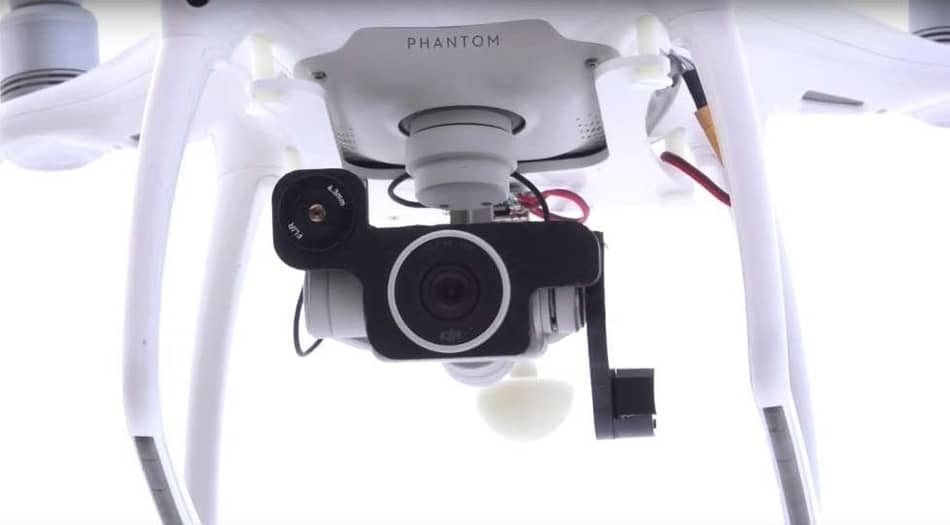
When you take out your equipment in a cold environment outside while it comes from a warmer or indoor place, fogging may appear on the camera of your drone. It is actually a thermal shock that occurs.
Besides, I learned in a photo book that some professional photographers and videographers who go to cold countries do not hesitate to leave their equipment outside overnight before leaving the next day to avoid the thermal shock. Obviously we will not leave the batteries outside because they hate the cold!
Before taking off, take a look at the camera lens and if necessary with a special soft cloth lens or glasses, remove the moisture. It would be a shame to film such beautiful landscapes and finally realize the video editing that the shooting is unusable.
Tip #8: Plan for a Sudden Drop in Voltage
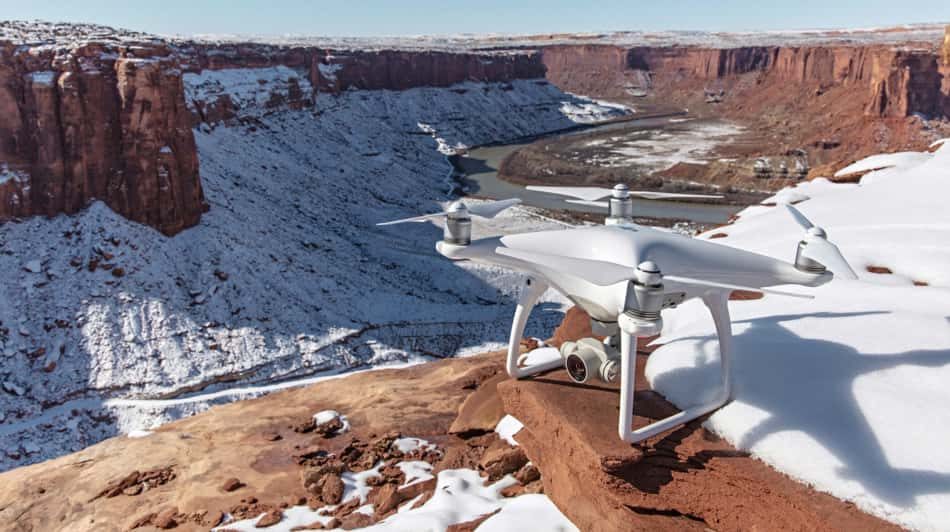
A fully charged battery will have a higher voltage. If the cold suddenly drops the voltage of your battery, it will not reach its critical threshold and will not go into safety mode. We recommend not taking off if your battery is less than 90% charged.
As mentioned earlier, the cold can cause your battery voltage to drop suddenly. We therefore recommend that you fly more calmly than usual. Do not try to push your drone to its limits; the slower you fly, the less likely your drone will fall from the sky.
We cannot repeat it enough, storing LiPo batteries in a cold place is very dangerous. This can create voltage differences between the cells of your battery. When the voltage difference is too large, your battery goes into safety mode and will not even charge.
Tip #9: Activate Obstacle Detection Before Flight
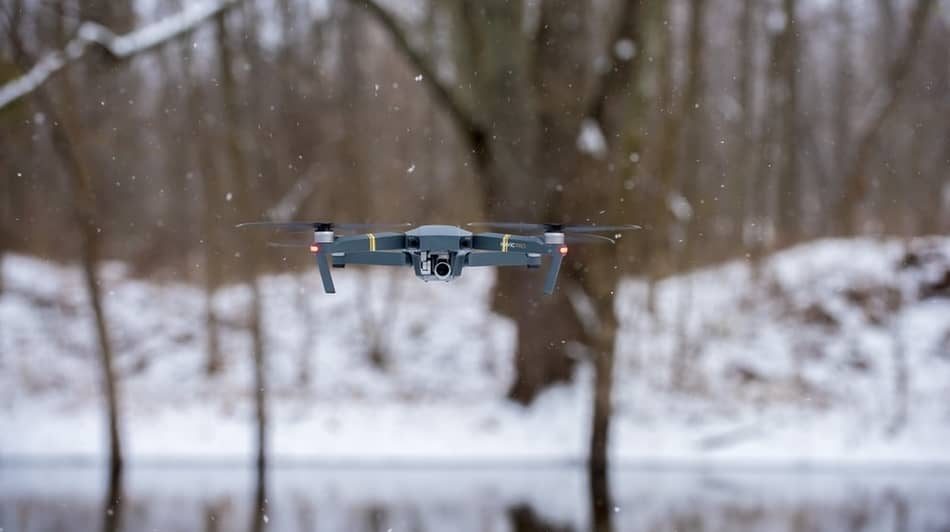
This is definitely recommended before embarking on a cold weather flight. However, I almost crashed our little direct Mavic Pro in the snow! The lower sensors did not work well when I was doing a terrain tracking plan on a snow-covered mountain side.
As a result, instead of continuing its ascent quietly following the slope, it went straight to the snow! Fortunately, the obstacle detectors were activated and they stopped the drone. Therefore, it is advisable to have sensors turned on if your drone has one.
Besides, obstacle detectors are also very sensitive to light and reflections. This sometimes causes sudden stops of the drone which rears with all its strength, when one passes too close to a surface which reflects the sun like snow.
Tip #10: Monitor the Drone Behavior During the Flight
That’s it, it’s the big moment of flight. You will pilot your drone. But not so fast! There is one last point to check just before. If you have not followed my advice to keep the batteries warm during transport, then an alert in the GO app will appear on the screen: “The battery temperature is below 15°C. Heat the battery to a temperature above 25 °C to ensure safe flight ”:
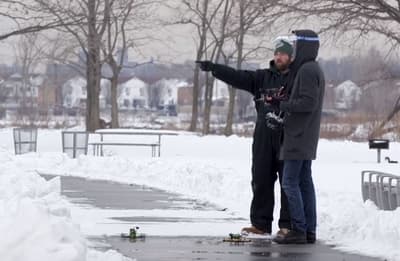
During the flight, try to always keep an eye on the state of the battery. And as soon as it reaches 30%, I advise you to bring the ski drone for landing.
List Of Most Popular Drones And Their Optimal Flight Temperatures
If you’re planning to fly your drone in low temperatures, it is a good thing to read owners’ manual of your drone and see the temperatures that are optimal for performance. Listed below are some popular drones optimal flight temperatures:
- DJI Phantom 3 PRO: 32 °F to 104 °F (0 °C to 40 °C)
- DJI Phantom 4: 32 °F to 104 °F (0 °C to 40 °C)
- DJI Phantom 4 PRO: 32 °F to 104 °F (0 °C to 40 °C)
- DJI Mavic PRO: 32 °F to 104 °F (0 °C to 40 °C)
- DJI Mavic Air: 32 °F to 104 °F (0 °C to 40 °C)
- DJI Inspire Pro: 14 °F to 104 °F (-10 °C to 40 °C)
- DJI Inspire 2: 14 °F to 104 °F (-10 °C to 40 °C)
- Yuneec Typhoon H520: 14 °F to 104 °F (-10 °C to 40 °C)
How to Properly Land a Drone in The Snow?
If you are planning to fly a drone in a snowy environment, it is advisable to use a take-off / landing pad which will avoid doing it by hand (do not forget to get on the ski slopes because it can be very dangerous to fly over people ).
It’s quite simple but it still requires a little practice. Above all, deactivate the lower sensors because they control vision positioning and landing protection which will prevent the drone from descending if you put your hand underneath to catch it.
And then pay close attention to your fingers and above all do not leave them near the rotors and propellers. This manipulation already requires a good level of skills, knowledge of the drone and technique. If you are a beginner, I strongly advise against it.
Related Article: Best Drones For Cold Weather: Flying a Drone in Winter
Conclusion
Here we have covered all the possible conditions you may find yourself when using a drone in cold weather. We saw how cold weather and low temperatures can affect the drone flight time and how drastically it reduces the performances of the drone. Therefore, I advise you to strictly follow these ten tips if you want to safely fly your drone.
Remember to warm up your batteries before the flight, and if you have a DJI drone, use special heater of DJI designed just for this occasions. Snow which has substantially the same disadvantages as rain, can affect drones electronics, and burn all the components in the drone. If I forgot something or you want to comment, feel free to write below.

